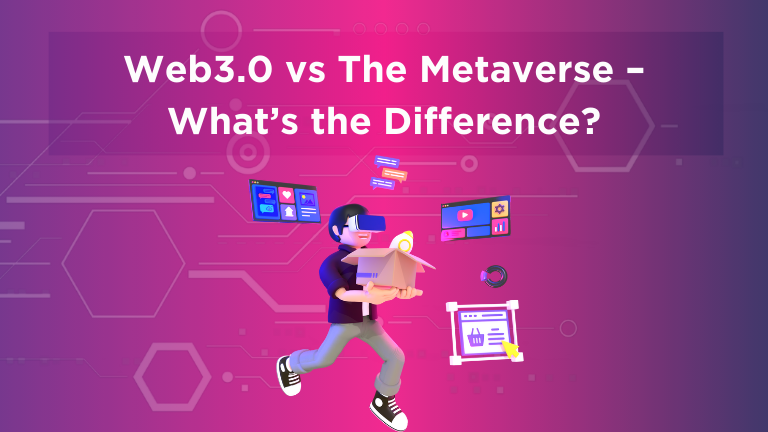The Apple Vision Pro Vs Meta Quest 3 comparison
For years, Meta (formerly known as Facebook) has dominated a large swathe of the XR landscape. It has not only delivered some of the most affordable and user-friendly headsets on the market but has also become synonymous with the emergence of the “metaverse“.
In spite of the numerous companies attempting to introduce alternatives to Meta’s “Quest” headsets, few have managed to replicate their broad market appeal. Yet, this status quo may soon be disrupted. In June 2023, at the eagerly awaited WWDC event, Apple revealed the product that every XR enthusiast and Apple aficionado has been anticipating: the Vision Pro headset.
The Apple Vision Pro headset has ignited immense excitement in the tech community. It’s reported to be the first “spatial computing” Mixed Reality device available in the consumer market. Interestingly, this announcement arrives hot on the heels of Meta’s unveiling of the latest addition to their Quest line: The Meta Quest 3.
Given these exciting developments, the pressing question for 2023 is: which of these new headsets deserves your consideration?
![[Alt: A depiction of the XR landscape highlighting Meta's dominance in the industry.]
[Alt: A visual of Meta's Quest 3 and Apple's Vision Pro headsets, representing the imminent market competition.]
[Alt: Illustration of the cutting-edge technology of the Vision Pro headset and Meta's Quest 3.]
[Alt: Comparative image of the designs of Meta's Quest 3 and Apple's Vision Pro, showcasing their unique features.]
[Alt: Graphical presentation of the display capabilities and performance metrics of Vision Pro and Quest 3.]
[Alt: A snapshot of the mixed reality features of Vision Pro and Meta Quest 3, highlighting their differing approaches.]
[Alt: Visualization of the operating systems of Apple Vision Pro and Meta Quest 3, emphasizing their app compatibilities.]
[Alt: A comparative graphic on the pricing of Apple's Vision Pro and Meta's Quest 3, underscoring the difference in their market positioning.]
[Alt: Text summarizing the key considerations for choosing between the Apple Vision Pro and Meta Quest 3 in 2023.]](https://fourpointzero.io/wp-content/uploads/2023/06/apple-wwcd23-vision-pro-with-battery-1024x576.webp)
![[Alt: A depiction of the XR landscape highlighting Meta's dominance in the industry.]
[Alt: A visual of Meta's Quest 3 and Apple's Vision Pro headsets, representing the imminent market competition.]
[Alt: Illustration of the cutting-edge technology of the Vision Pro headset and Meta's Quest 3.]
[Alt: Comparative image of the designs of Meta's Quest 3 and Apple's Vision Pro, showcasing their unique features.]
[Alt: Graphical presentation of the display capabilities and performance metrics of Vision Pro and Quest 3.]
[Alt: A snapshot of the mixed reality features of Vision Pro and Meta Quest 3, highlighting their differing approaches.]
[Alt: Visualization of the operating systems of Apple Vision Pro and Meta Quest 3, emphasizing their app compatibilities.]
[Alt: A comparative graphic on the pricing of Apple's Vision Pro and Meta's Quest 3, underscoring the difference in their market positioning.]
[Alt: Text summarizing the key considerations for choosing between the Apple Vision Pro and Meta Quest 3 in 2023.]](https://fourpointzero.io/wp-content/uploads/2023/06/e06e00e0-0085-11ee-bd3e-f25c4b1a4507.webp)
Apple Vision Pro vs Meta Quest 3: Specs Overview
| Specs | Apple Vision Pro | Meta Quest 3 |
| Release date | Early 2024 | 2023 (expected) |
| Price | $3,499 | $499 (128GB) |
| Chipset | M2 chip, R1 chip | TBA Qualcomm Snapdragon |
| Display resolution | 4K (per eye) | TBA |
| Battery life | 2 hours | TBA |
| Mixed reality | MR by default | Full color passthrough |
| Lenses | Pancake | Pancake |
| Display type | micro-OLED | LCD |
Meta Quest 3 vs Apple Vision Pro: Design
Both capable of AR/VR, or “Mixed Reality” experiences, the Meta Quest 3 and Apple Vision Pro seem pretty similar at a glance. However, there are some major differences in design. For instance, the Vision Pro utilizes an aluminium alloy frame and a curved laminated glass visor, loaded with 12 cameras, 6 microphones, and 5 sensors to track your hands, voice, and eyes.
The Vision Pro even includes a feature called “EyeSight”, which allows the headset to showcase your eyes on the outside of the visor when you’re talking to someone face-to-face. Apple built the technology with a focus on custom comfort. There are various modular “Light Seal” and headband options to choose from to suit your face. There’s also a knob for making micro fit adjustments.
The Meta Quest 3, on the other hand, builds on Quest’s already familiar design, taking a one-size-fits-all approach. The solution is slightly slimmer than its predecessor, thanks to the use of think pancake optics. Additionally, while the sensors and cameras on the Meta Quest aren’t as advanced as those on the Vision Pro, Meta’s headset does come with a new camera array on the front of the visor, with a depth sensor and 4MP RGB colour camera for accurate video passthrough.
The Apple Vision Pro utilizes mixed reality passthrough by default, but users can also choose to adjust their immersion level with a dial on the top of the device. Alternatively, Quest 3 seems to focus primarily on the virtual world, with mixed reality levels determined by your app choices. The Quest 3 also comes with a wheel to adjust IPD and a Y-shaped headset band.
For speakers, Apple offers access to spatial sound with audio pods which can be tuned to your specific preferences. Meta has yet to reveal any information about the Quest 3 speakers, but we can assume they’ll be robust enough based on the Quest 2.
Apple Vision Pro vs Meta Quest 3: Display & Performance
Comparing the Quest 3 and Vision Pro displays is a challenging task. Largely due to the limited information regarding the Quest 3. Meta has announced that the Quest 3 will utilise pancake optics and have the highest resolution of any Quest device. On the other hand, Apple has been much more forthcoming about the specifications of the Vision Pro’s display.
The Vision Pro features two 4K micro OLED displays, one for each eye, capable of delivering wide colour and HDR. The two displays together render 23 million pixels. This results in 64 times the pixel density of an iPhone on screens as small as a postage stamp.
When it comes to performance, details are limited. Early indications suggest that the Vision Pro will be the more robust of the two. It will be powered by an M2 chip and a second R1 chip to process sensor inputs and minimise lag. These will operate under Apple’s own spatial computing system.
Meta has been quiet about the Quest 3’s specifications. The only news is that it will be the most powerful headset yet. This will be powered by a next-generation Qualcomm Snapdragon SoC chipset. This chipset is said to offer double the graphical performance of the Quest 2.
Battery life remains another mystery, with Meta giving no indications about the longevity of the Quest 3. Meanwhile, the Vision Pro is slated to offer two hours of wireless use before needing to be plugged in for recharging.
Meta Quest 3 vs Apple Vision Pro: Controllers and MR
Both the Meta Quest 3 and Apple Vision Pro promise mixed reality features, but with a different approach. The Apple Vision Pro constantly allows you to connect with the outside world while you’re engaging with digital content, while Meta Quest 3 is more focused on VR.
In terms of controls, the two solutions are also extremely different. There are no controllers included with the Apple Vision Pro. Instead, the device uses a combination of cameras, microphones, and sensors so you can control apps using voice, gestures, and eye movements. The ring of LED lights in the headset promises exceptional eye-tracking capabilities to ensure you can scroll through content without even lifting a finger.
While the Meta Quest 3 will support hand-tracking capabilities, it also comes with controllers for more in-depth controls. The controllers are designed to be sleeker and easier to use than the previous options for the Quest 2. They also come with TruTouch haptics for physical feedback.
Apple Vision Pro vs Meta Quest 3: Operating System and Apps
One particularly exciting area worth evaluating if you’re choosing between the Apple Vision Pro and the Meta Quest 3 is the operating systems for both devices. When unveiling its new headset at WWDC, Apple also introduced a brand-new spatial computing operating system called VisionOS. The solution aims to make it easier to create apps for Vision Pro and power a more immersive experience.
When it comes to apps and solutions included on the system, Apple will be bringing thousands of apps from its tablet and iPhone stores into the ecosystem, as well as tools like Microsoft Teams and Zoom from third-party vendors. Disney is even reportedly creating a version of the Disney+ app for the solution, and Apple is also uploading over 100 games from Apple Arcade into VisionOS.
Meanwhile, the Meta Quest 3 will be backwards compatible with the entire games and app library from the Meta Quest 2, so you can start browsing through content at launch. Compared to the Apple Vision Pro, the Quest 3 seems to be focused more on gaming and entertainment, while Apple offers more solutions for productivity and collaboration.
Meta Quest 3 vs Apple Vision Pro: Pricing
Here’s where things really get challenging. The Meta Quest 3 is going to be a lot more affordable than the Vision Pro. According to Apple, this new device will cost around $3,499 when it goes on sale in 2024, making it one of the most expensive headsets on the market.
The Meta Quest 3 is set to cost around $499 for the 128GB model, according to Meta, and there will also be another option available with a higher storage capacity. The release date for the Quest 3 hasn’t been announced yet, but estimates predict it should be coming to stores later this year.
Which Headset Should You Choose?
Obviously, there are a lot of major differences between these headsets. The solution you choose will likely depend on how you plan on using your headset. The Vision Pro is definitely a far more powerful mixed-reality device, ideal for productivity, collaboration, and business applications, as well as various forms of entertainment. However, with its hefty price tag, it’s going to be hard for a lot of consumers to access initially.
The Quest 3 is much more affordable and may offer a better gaming experience for those who want to use their headsets specifically for entertainment. However, it’s not nearly as powerful as the Apple Vision Pro for anyone who wants to really invest in an XR experience. Plus, the MR features are a lot more limited with the Quest 3.
The question is, do you want an enhanced version of the already popular Quest 2 experience, or do you want to travel somewhere entirely new with Apple’s Vision Pro?




